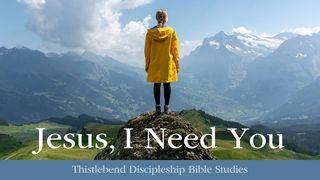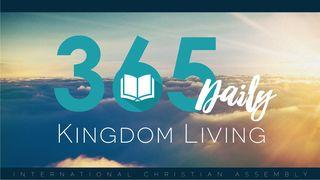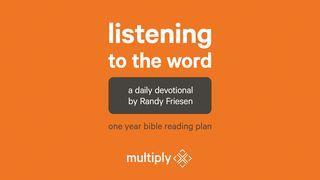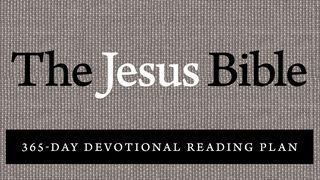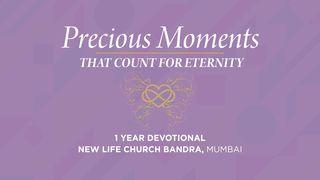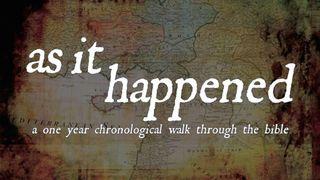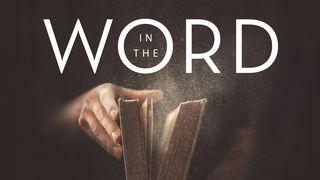For The Love Of GodSample

DANIEL NOT ONLY INTERPRETED the dreams of others, on occasion he himself had dreams that needed interpretation. The one described here (Dan. 7) took place in the first year of Belshazzar (Dan. 7:1), i.e., more than fifty years since Daniel had first been deported to Babylon. Not all revelation is given at once. From now to the end of the book, Daniel writes in the first person (with the exception of the note at Dan. 10:1).
(1) Although the four beasts representing four kingdoms or empires are in some measure sequential (and to that extent probably to be identified with specific historical kingdoms—see below), the initial observation that these four beasts came out of the sea (proverbial for chaos and wickedness) churned up by the four winds (i.e., from the four points of the compass, or everywhere) may hint that they also represent all kingdoms that oppose God.
(2) The evocative nature of these beasts must not be overlooked. The lion combined with the eagle suggests dominion, speed, and strength. The brown Syrian bear may weigh up to six hundred pounds and has a voracious appetite. The leopard is known for its extraordinarily sudden, rapid attacks; its four heads show it to be rapacious in all directions, wanting dominion everywhere. The last beast is “terrifying and frightening and very powerful … it crushed and devoured its victims and trampled underfoot whatever was left” (Dan. 7:7). Horns represent kings or kingdoms or dominion; this beast has ten of them, five times more than the natural two horns. The best identification is that the four beasts represent, respectively, the Babylonian, Medo-Persian, Greek, and Roman Empires.
(3) The expression “son of man” is a Semitic way of saying “human being.” The other kingdoms are beastly and inhuman; here the reins of power rest in the hands of a human being as God meant a human being to be. Because of the parallels between verse 14 and verses 18 and 27, some have argued that “son of man” is merely a symbol for the “saints of the Most High” (Dan. 7:18). But the matter is not so simple. If “son of man” in verses 13-14 were merely a symbol of the people of God, why should the authority be given to one who is like “a son of man”? The figure in verse 12 is an individual figure, yet he has a representative role (like the Old Testament priest, cf. Ex. 19:6). He comes “with the clouds of heaven,” a common association with the glory of deity. And by using “son of man,” the vision simultaneously signals a kingship that extends beyond Israel to all of humankind and prepares the way for the incarnation. Cf. Matthew 19:28; Mark 13:26; 14:62; Revelation 1:13-16.
(1) Although the four beasts representing four kingdoms or empires are in some measure sequential (and to that extent probably to be identified with specific historical kingdoms—see below), the initial observation that these four beasts came out of the sea (proverbial for chaos and wickedness) churned up by the four winds (i.e., from the four points of the compass, or everywhere) may hint that they also represent all kingdoms that oppose God.
(2) The evocative nature of these beasts must not be overlooked. The lion combined with the eagle suggests dominion, speed, and strength. The brown Syrian bear may weigh up to six hundred pounds and has a voracious appetite. The leopard is known for its extraordinarily sudden, rapid attacks; its four heads show it to be rapacious in all directions, wanting dominion everywhere. The last beast is “terrifying and frightening and very powerful … it crushed and devoured its victims and trampled underfoot whatever was left” (Dan. 7:7). Horns represent kings or kingdoms or dominion; this beast has ten of them, five times more than the natural two horns. The best identification is that the four beasts represent, respectively, the Babylonian, Medo-Persian, Greek, and Roman Empires.
(3) The expression “son of man” is a Semitic way of saying “human being.” The other kingdoms are beastly and inhuman; here the reins of power rest in the hands of a human being as God meant a human being to be. Because of the parallels between verse 14 and verses 18 and 27, some have argued that “son of man” is merely a symbol for the “saints of the Most High” (Dan. 7:18). But the matter is not so simple. If “son of man” in verses 13-14 were merely a symbol of the people of God, why should the authority be given to one who is like “a son of man”? The figure in verse 12 is an individual figure, yet he has a representative role (like the Old Testament priest, cf. Ex. 19:6). He comes “with the clouds of heaven,” a common association with the glory of deity. And by using “son of man,” the vision simultaneously signals a kingship that extends beyond Israel to all of humankind and prepares the way for the incarnation. Cf. Matthew 19:28; Mark 13:26; 14:62; Revelation 1:13-16.
About this Plan

A daily devotional for discovering the riches of God's word: For the Love of God is a daily devotional designed to walk a person through the Bible in a year while assisting the reader in discovering the riches of God's Word. Our hope is that this daily devotional will deepen your understanding and appreciation of God's Word, for the love of God.
More
We would like to thank The Gospel Coalition for providing this plan. For more information, please visit: thegospelcoalition.org

